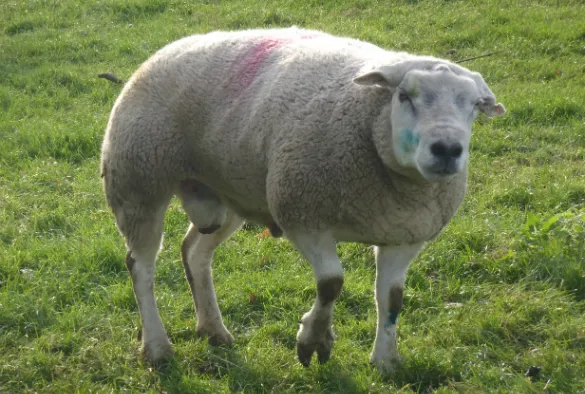CODD
Contagious Ovine Digital Dermatitis (CODD) is a severe foot condition in sheep that was first described in 1997. It is caused by a spirochaete bacterium similar to those involved in digital dermatitis in cattle. This disease can cause significant lameness and discomfort in affected sheep, leading to reduced grazing and rapid loss of body condition.

Symptoms and diagnosis of CODD in sheep 🩺
Sheep with CODD typically show severe lameness, often affecting one digit of one foot. The primary lesion usually appears at the coronary band of the outer hoof wall and progresses towards the toe, causing detachment and shedding of the horn capsule. Other symptoms include:
- Reduced grazing activity
- Long periods of lying down
- Rapid loss of body condition
- Loss of hair extending 2-3 cm above the coronary band
It can be challenging to differentiate CODD from footrot, so veterinary investigation is essential for accurate diagnosis. In severe cases, the damage to the corium may be so extensive that re-growth of the horn is permanently affected.
How to treat CODD in sheep 💊
Immediate examination and treatment of lame sheep are crucial. The recommended treatment includes:
- Parenteral long-acting oxytetracycline (10 mg/kg)
- Non-steroidal anti-inflammatory drugs (NSAIDs)
- Topical treatment of skin lesions with oxytetracycline aerosol
Other antibiotics such as long-acting amoxicillin have also been used successfully. There is anecdotal evidence suggesting that tilmicosin and gamithromycin injections may be more effective than oxytetracycline and amoxicillin, but further research is needed to confirm this.
How to prevent CODD in sheep 🛡️
Preventing CODD involves strict biosecurity measures to avoid introducing the disease onto the farm. Key steps include:
- Quarantining all purchased sheep for at least one month
- Investigating all cases of sudden severe lameness
- Keeping sheep separate from cattle if digital dermatitis is present in the cattle
Regular inspection of all purchased sheep during the quarantine period and prompt treatment of any lame sheep are essential. Additionally, maintaining good hygiene and avoiding the introduction of infected animals can help prevent the spread of CODD.
Conclusion
Contagious Ovine Digital Dermatitis is a serious condition that requires prompt attention and treatment. By following strict biosecurity measures and ensuring timely treatment, farmers can help protect their flocks from this debilitating disease.

